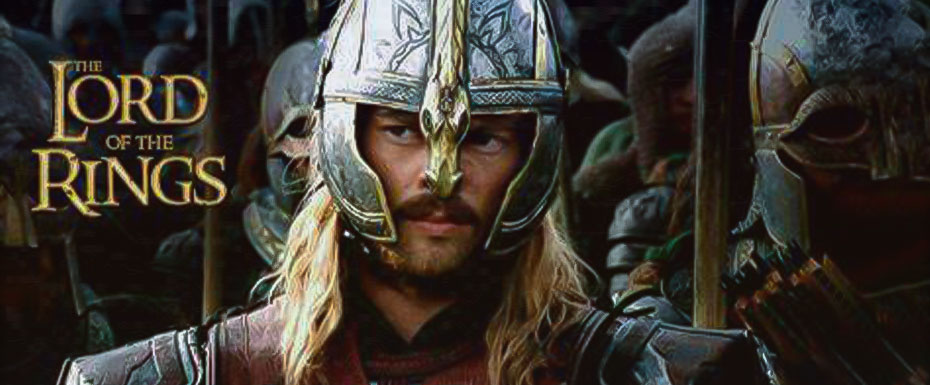
Tom A. Shippey “The Road to Middle-Earth”

A fundamental work that takes a detailed look at the entire world described by Tolkien, and how exactly this world was created, from which legends the author borrowed images, from which languages he took the prototypes of words and names. Shippey himself, a literary critic and philologist, was Tolkien’s younger contemporary. He sent him the first sketches of his book and received an answer, which, as he confessed, greatly influenced his future work. Moreover, Tom Shippey considered it very important that at Cambridge University, he studied according to the curriculum that Tolkien himself had once formed up and then taught for a long time.
With all this serious approach, the book is absolutely gripping. No wonder Shippey also wrote science fiction – together with Harry Harrison. And here, he analyzes many of the critical scenes of “The Lord of the Rings” and other works by Tolkien, supplementing them with his own interpretation of what is happening. Adding to this – graceful, often humorous, descriptions of what the critics of that time said about Tolkien’s work, and in which sarcastic expressions the Professor answered them.
William Butler Yeats “The Celtic Twilight”

It makes sense to read this book to understand what influenced the formation of Tolkien as a writer. However, it is completely adorable in itself! “The Celtic Twilight” is beautiful not only for the skillful interweaving of legendary motifs from the high epic to folk superstitions. It is also the impressions of a modern (at that time) person about how the epic tradition is losing its strength under the onslaught of the new time.
The same thoughts worried Tolkien when he began work on “The Lord of the Rings.” Although the Professor admitted that he loves Ireland, he cannot stand the ancient language there. It is a well-known topic – Celtic dialects were difficult for English speakers. Even Mark Twain joked about this in his novel about the Yankees who ended up at the court of King Arthur. By the way, Tolkien’s very first impulse to work on his own epic was the desire to create a new epic, purely English, because the legends about Arthur, although associated with Britain, still refer to the previous tradition – the Celtic one.
Nick Perumov “Ring of Darkness”
The well-known Russian science fiction writer wrote his own series of works, taking Tolkien’s world as a basis. But he placed the accents in his own way. He depicted the strength of good as not very flawless, and in general, they even look down on everyone. As a result, they even manage to miss the obvious danger to themselves. The forces of evil are not completely devoid of humanity, and they can even be understood somehow. For this, many people love Perumov – well done, he has reduced the pathos, which Tolkien has in abundance! Although the excessive pretentiousness of the Russian-language versions of “The Lord” is mainly on the conscience of not the author but the translators.
Perumov’s events are played out several centuries after the story described in “The Lord of the Rings.” Among the characters are the descendants of the main characters, most notably Falco from the Merry family, one of the four Hobbits-Guardians. And those who do not like this book cycle point out precisely that the author did not create his own world, albeit with similar motives, but took someone else’s.
Guy Gavriel Kay “The Fionavar Tapestry”

A trilogy heavily influenced by Tolkien. Together with Christopher, the son of the writer, the author analyzed his archive and prepared “The Silmarillion” for publication. After all, this work was never published during Tolkien’s lifetime: having received a refusal from the publisher, he no longer tried to release it but wrote “The Lord of the Rings.”
It is not a rewrite of Tolkien but a completely different work. There are a lot of mythological motifs taken in their pure form, and Tolkien has them significantly reworked. Various myths are mixed here – first of all, Celtic and Scandinavian. Even the ancient Greek elements are there. There is also a direct reference to the stories of King Arthur. There are also time-travel students in the plot, who have found themselves moved from the usual civilized environment straight to the place where swords are ringing, battles are raging, and another version of the Common Enemy is doing all sorts of evils. It is not the Professor who is responsible for approving such transformations in the literature but his friend Lewis with his Narnia! Kay’s trilogy is much sharper and more violent than “The Lord of the Rings,” and its themes are more mature and modern.
Ursula K. Le Guin “Earthsea”
Another colorful, carefully described world, which has already become a classic by now! The most famous are the first three novels in this series – “The Wizard of Earthsea,” “The Tombs of Atuan,” and “The Farthest Shore.” The story is epic but often looks more mundane than, for example, the large-scale picture of the “Tapestry” mentioned above. Another matter is that this routine is also gradually rising to the heights of significant epicso slowly that you don’t even have time to notice how it came down to flying on dragons and fighting for the fate of the universe itself, from repairing fishing boats and making stew.
Here the author allows the reader to grow up with the hero. At first, he is an ignorant boy with magical abilities in which he does not understand anything. But from fear for his village, when the enemies attacked, his talent manifested itself. And this is where a long and exciting journey begins.





